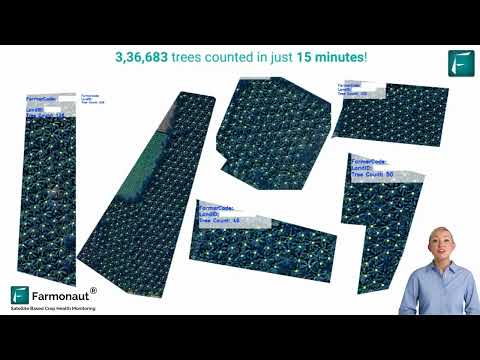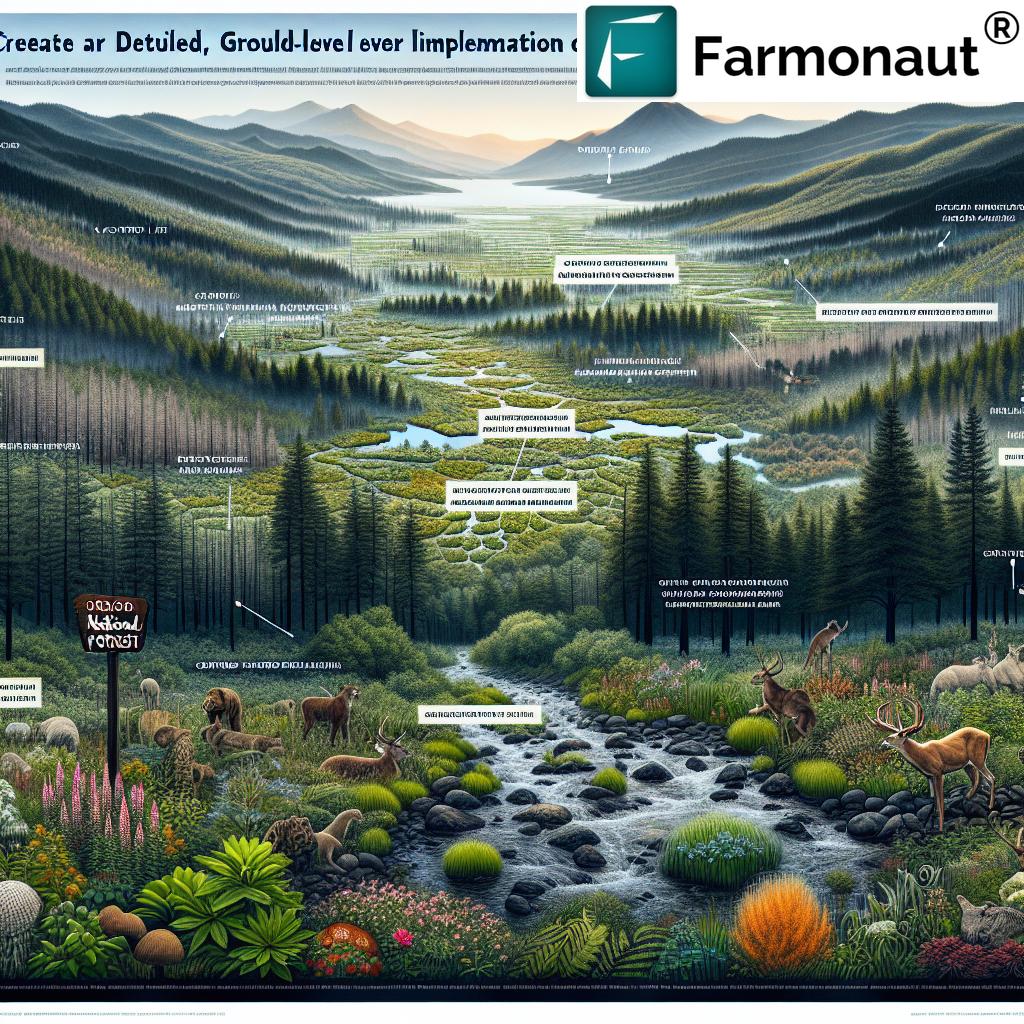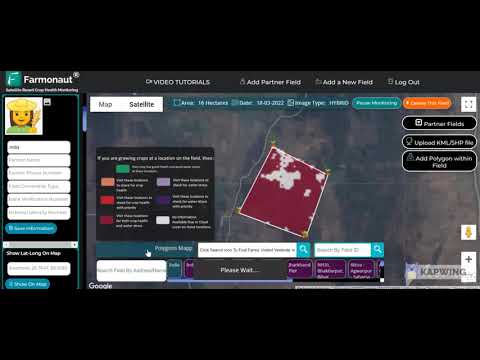7 Major Effects of National Forest Logging on Oregon’s Land & Wildlife
“Oregon’s national forests supply about 15% of the state’s domestic timber, impacting both economy and wildlife habitats.”
Introduction: National Forest Logging in Oregon
National forest logging is a headline issue in Oregon, with significant ramifications for local communities, forest ecosystems, timber production in the United States, and the long-term sustainability of our public lands. The recent federal directives signed in March and April have triggered controversy, with the Trump administration taking bold steps to boost logging by directing the Secretary of the Interior and the Secretary of Agriculture to open large swathes of national forest land for commercial timber harvesting.
As we explore the 7 major effects of these policy changes on Oregon’s land and wildlife, we must balance the need for domestic timber supply against the vital imperative to restore forest resilience, protect wildlife habitat, and preserve clean water for future generations.
Oregon’s Forests: A Critical Resource
Oregon is a state deeply intertwined with its forests. Our vast stretches of national forest land are not only an ecological treasure trove, but also a central pillar of rural prosperity and a cornerstone of our domestic timber industry. According to estimates, Oregon’s forests supply roughly 15% of the state’s domestic timber. With nearly 60% of the Forest Service-managed lands now opening up for new logging initiatives, all Oregonians have a stake in the choices ahead.
In this blog, we’ll cover:
- Key federal orders driving recent changes
- Comparative overview of the effects
- The seven most significant consequences of logging on Oregon’s land and wildlife
- The role of new technologies and data-driven forest management
- Frequently asked questions relevant for communities, stakeholders, and land stewards
Federal Directives and Oregon’s National Forests
In March, President Donald Trump signed an executive order that fundamentally affects forestry management nationwide. The order directed the Secretary of the Interior and the Secretary of Agriculture to issue new guidance aimed at increasing timber production and bolstering wildfire resiliency across the United States national forest system.
On April 3rd, USDA Secretary Brooke Rollins subsequently issued a memo designating an “emergency situation” on national forest lands—thus opening significant portions of the Forest Service estate (approximately 176,000 square miles) for commercial timber harvesting. Ostensibly, this move is designed to reduce wildfire disasters, ensure an adequate domestic timber supply, and restore the economic health of impacted rural communities.
Yet, this “emergency” declaration has been met with both support and alarm. AFRC and other industry groups believe these steps are necessary to restore forest health and reduce wildfire risk. By contrast, conservation organizations such as Oregon Wild fear that suspending long-standing environmental protections could have devastating consequences for Oregon’s wild lands, wildlife, and clean water.
Policy in Action: What’s Changing for Oregon?
The announced policy pivots by the USDA and Forest Service will directly shape Oregon’s approach to forest management plans, wildfire risk reduction strategies, and how our public lands timber harvesting is regulated. The inclusion of loosely defined “emergency” areas, as shown in the much-debated USDA map, underscores the pervasive uncertainty. Not all forest areas carry commercially viable timber, nor do they all face the same wildfire risk. The complexity of the situation demands thoughtful, balanced, science-driven action that considers not only short-term economic production, but also Oregon’s long-term environmental resilience.
Comparative Table: Impacts at a Glance
| Effect Area | Estimated Impact | Outcome | Relevant Management Strategies |
|---|---|---|---|
| Wildfire Risk / Forest Resilience | ~80 million acres in need of restoration (USDA/AFRC est.) | ✔ (Positive, when targeted scientifically) | Thinning, controlled burns, science-backed active management |
| Wildlife Habitat | Over 60% of threatened species in affected areas risk habitat loss | ✖ (Negative, especially with clear-cutting) | No-logging zones, habitat mapping, adaptive management, carbon footprinting tools |
| Water Quality | Sedimentation risk increases by 25% in poorly managed zones (est.) | ✖ (Negative) | Buffer zones, restoration, tech-aided water monitoring |
| Domestic Timber Supply & Economy | Up to 15% of Oregon’s domestic timber; hundreds of local jobs | ✔ (Positive) | Balanced harvesting, market analysis, fleet/resource management solutions |
| Public Involvement | Weakened if regulations relaxed or “emergency” status invoked | ! (Mixed/Negative) | Transparent planning, traceability tools, open data access |
| Restoration & Innovation | Potentially improved with adoption of AI/satellite tech | ✔ (Positive, if implemented) | Satellite monitoring, resource optimization, large-scale management tools |
| Landscape & Climate | Long-term risk of reduced resilience to climate shocks | ✖ (Negative unless mitigated) | Sustainable harvest, continuous impact tracking, carbon mapping |
“Over 60% of Oregon’s threatened wildlife species rely on national forest habitats affected by logging and management practices.”
7 Major Effects of National Forest Logging on Oregon’s Land & Wildlife
Let’s examine in detail the complex and far-reaching impacts of national forest logging across Oregon. Each effect is multi-faceted, involving both risks and potential rewards, and requires careful scientific, policy, and community attention.
1. Wildfire Risk Reduction and Forest Resilience
Oregon’s wildfires have grown more severe and frequent, driven by a combination of climate change, historic fire suppression, and overcrowded forests. One of the chief rationales behind increasing commercial timber harvesting on national forest land is to reduce “fuel loads” and bolster overall resilience to wildfire.
- Scientific Backing: There is strong science indicating that targeted thinning and selective harvesting can, if planned carefully, act as effective wildfire risk reduction strategies by removing excess underbrush and small-diameter trees that serve as fire ladders.
- Critical Caveats: The manner and location of logging matter profoundly. Clear-cutting, or the removal of old-growth stands, can actually reduce forest resilience and exacerbate wildfire risk over the long-term.
- Restoration Need: The Forest Service and AFRC estimate that nearly 80 million acres are in need of restoration to address wildfire risk, disease, and insect infestation. Strategic interventions—guided by real-time monitoring technology—can help.
Balancing Wildfire Management and Timber Production
While increasing timber production in the United States may provide short-term relief for fire-prone areas, only a nuanced, data-driven approach (combining AI, satellite data, and seasoned forest management expertise) will truly enable us to restore forest resilience and protect both people and wildlife.
Discover how you can monitor and reduce your environmental impact with Farmonaut’s Carbon Footprinting tool. Perfect for sustainable land and forest management!
2. Wildlife Habitat Disruption and Biodiversity Loss
Our wildlands are home to a remarkable diversity of species—over 60% of Oregon’s threatened species, in fact, rely on national forest habitats potentially affected by logging and management changes. The consequences of ramped-up logging on wildlife include:
- Habitat Fragmentation: Large patch removal via clear-cutting splits intact wildlife habitats into isolated “islands,” lowering survival rates and genetic diversity for numerous species.
- Loss of Old-Growth Ecosystems: Many endangered birds, mammals, and amphibians require the unique microclimates, downed wood, and canopy cover provided only by older forests. If commercial logging regulations are relaxed without safeguard, key populations could be pushed further toward extinction.
- Species Displacement: Disruption causes animals to seek new habitats, increasing both interspecies competition and threats to migratory corridors.
- Science-Based Zoning: Adaptive, science-backed mapping of exclusion and buffer areas can mitigate these impacts—especially when informed by tools such as satellite-based habitat assessment.
To better balance timber harvesting with wildlife habitat protection, Oregon needs to support and implement real-time habitat monitoring, adaptive management, and environmental regulations grounded in the latest conservation science.
3. Impact of Logging on Water Quality and Watersheds
Oregon’s abundant rainfall and complex river systems depend on healthy, intact forests for reliable water purification, flood mitigation, and steady streamflow. Increased logging—especially if emergency declarations speed up the regulatory process—can have profound effects on:
- Increased Sedimentation: Soil disturbed by logging and road-building can enter streams, clouding water, harming fish (like salmon and trout), and impairing municipal water supplies.
- Chemical Pollution: Herbicides, pesticides, and runoff from logging sites can enter water systems, impacting aquatic life and potentially human health.
- Loss of Shade and Temperature Regulation: Riparian buffers, if lost, result in elevated stream temperatures—detrimental for many sensitive aquatic organisms.
The impact of logging on water quality is a core concern voiced by both environmental advocates and public health officials. Active management that prioritizes no-harvest buffer zones, minimizes road density, and leverages advanced monitoring, will be key to safeguarding Oregon’s vital water resources.
Maintain environmental accountability throughout your forestry operations with Farmonaut’s Blockchain-Based Traceability. Ensure every step, from forest to mill, is recorded and secure for regulatory and community peace of mind.
4. Economic Gains, Jobs, and Domestic Timber Supply
The economic, job, and supply side of logging remains important to many Oregon communities, especially those historically dependent on timber.
- Job Creation & Rural Prosperity: The timber sector supports thousands of Oregonians and underpins local rural economies. Expanded logging could, in the short-term, spur new job opportunities and bolster economic prosperity.
- Stabilizing Domestic Supply: By increasing our domestic timber supply, we reduce dependence on foreign producers and buffer against global demand/supply swings.
- Infrastructure and Construction: A more predictable, adequate flow of raw timber benefits downstream industries—lumber mills, home builders, energy producers, and beyond.
- Sustainability Challenge: Without thoughtful regulation and continuous sustainability checks, economic gains can be short-lived, leading to eventual resource depletion, lost recreational opportunities, and declining forest health.
Looking to optimize your timber transport operations? Explore Farmonaut’s Fleet Management solutions – reducing costs, increasing safety, and improving the efficiency of forest logistics.
5. Changes to Forest Management Plans and Public Involvement
The emergency declaration by the USDA could undermine decades of hard-won environmental regulation and public engagement in the shaping of forest management plans. Our concerns center on:
- Weakening of Safeguards: In the rush to increase timber production, some of the foundational federal and state environmental regulations could be suspended or skirted, leading to negative unintended outcomes.
- Reduction in Public Oversight: “Emergency” measures may reduce the ability of the public and environmental organizations to participate in important land-use decisions affecting clean water, recreation, and wildlife habitat.
- Potential for Opaque Decision-Making: Concerns have arisen over the vagueness of the federal map outlining which areas are truly “open” to logging, risking inconsistent or inequitable implementation.
To preserve Oregon’s legacy of participatory wild lands stewardship, any move to adjust or “streamline” regulatory processes must be balanced with transparent, evidence-based, and inclusive community involvement.
6. Restoration, Active Management, and Innovation
Not all effects of the new directives are negative—if harnessed responsibly, they could lead to advancements in restoring forest resilience and modernizing how we manage and monitor vast landscapes.
- Embracing Active Management: Many scientists argue that a portion of our national forest lands—overgrown due to decades of suppression—would benefit from thinning, prescribed burning, and targeted timber harvesting as legitimate tools in restoration efforts.
- Integrating Technology: Technologies like satellite-based crop and forest health monitoring, AI-integrated advisories, and geospatial mapping prioritize efficiency, cost savings, and sustainability.
- Forest Monitoring: Continuous, real-time monitoring can alert operators to emerging threats (disease, pests, drought) and help fine-tune interventions before forests reach “emergency” status.
A future-focused approach, bolstered by precision resource management solutions such as those provided by Farmonaut, can help us realize the promise of sustainable, balanced forest stewardship.
For government entities and large landowners, Farmonaut’s Large Scale Farm Management tools deliver scalable, real-time insights to support informed land use and adaptive practices.
7. Long-term Landscape and Climate Implications
What’s ultimately at stake is the very essence of Oregon’s environmental and rural prosperity. The ripple effects from short-term logging decisions can resonate for decades through:
- Landscape-Level Fragmentation: Unchecked exploitation can erode scenic beauty, recreational access, and the ecological “reservoirs” that buffer us from climate shocks.
- Carbon Storage Loss: Mature forests lock away substantial carbon; over-harvesting can reverse this, fueling more extreme climate events.
- Shifting Baselines: Every generation risks inheriting a diminished version of Oregon’s wild legacy unless we anchor all logging activities in best-available science, technological monitoring, and community stewardship.
By investing in carbon footprint tracking and advanced management, we can hold the line on climate impacts and preserve ecosystem services for all Oregonians.
Developers and forestry businesses can integrate advanced satellite and weather data directly into their systems using Farmonaut’s API. See our detailed API developer docs for more information on automating monitoring and analysis.
Leveraging Technology for Sustainable Forest Management
Sustainable forest management in Oregon requires the precision and insight that only next-generation technology can provide. Farmonaut, a pioneering agricultural technology company, brings satellite-powered monitoring, AI-driven advisories, blockchain-based traceability, and resource management tools to the forestry and agriculture sectors.
- Satellite-Based Crop and Forest Monitoring: By analyzing multispectral imagery (NDVI, soil moisture, canopy density) we can detect problem “hot spots,” prioritize thinning, and measure restoration efficacy.
- AI-Driven Advisory with Jeevn AI: Real-time weather and health alerts deliver actionable advice, reducing wildfire risk and optimizing sustainable harvests.
- Blockchain Traceability: Every stage of timber—from harvest, to mill, to market—can be documented and verified, improving transparency and enabling regulatory compliance.
- Fleet/Resource Optimization: Digital oversight of vehicles, machinery, and crews enhances safety, fuel efficiency, and carbon footprint tracking.
- Affordable, Accessible, and Scalable: Farmonaut’s web and mobile apps put advanced tools in the hands of forest managers, commercial operators, small woodland owners, and public agencies alike.
Properly harnessed, these solutions help chart a path where timber production co-exists with wildlife habitat protection, water quality, and long-term resilience for Oregon’s forests.
Enhance sustainable forest operations using data-driven recommendations with Farmonaut’s Crop Plantation and Forest Advisory—trusted by land managers for smarter stewardship.
Frequently Asked Questions
Q1: Does increased national forest logging always reduce wildfire risk?
Not necessarily. Targeted thinning and brush removal can lower fuel loads and reduce fire risk when based on science and local data. However, clear-cutting or removing old-growth can decrease long-term resilience and habitat value, sometimes making forests more vulnerable over time.
Q2: How does logging affect water quality in Oregon?
Poorly managed logging increases erosion, sediment in streams, chemical runoff, and loss of streamside cover, degrading water quality. Carefully implemented commercial logging regulations—such as riparian buffers and tech-enabled oversight—can minimize these risks.
Q3: What is the impact of logging on wildlife?
Over 60% of Oregon’s threatened species utilize national forest habitats. Unregulated logging fragments and isolates habitats, threatens population viability, and can push species toward extinction. Science-driven zoning and monitoring are critical for wildlife habitat protection.
Q4: Do recent federal directives remove all regulations on public lands timber harvesting?
No. While “emergency” status can accelerate projects and relax certain safeguards, legal and regulatory frameworks still apply. However, many organizations, including Oregon Wild, argue this creates substantial risk of weakened environmental oversight and reduced public involvement.
Q5: How can technology help make Oregon’s forest management more sustainable?
Technology, like Farmonaut’s platform, brings real-time monitoring, AI-driven advisory, transparent traceability, and automated data analysis, empowering managers to base decisions on up-to-date science for improved restoration, compliance, and community trust.
Conclusion
The debate over national forest logging in Oregon is not just a policy issue—it’s about the future of our state’s environment, economy, and heritage. As we evaluate timber production, wildfire risk reduction strategies, and forest management plans, we must adopt a holistic approach that weighs both immediate benefits and lasting effects.
By using modern data, leveraging advanced technology, and ensuring inclusive, science-backed policy, Oregon can lead the nation in balancing production with stewardship. Farmonaut’s precision management solutions are a vital part of this future, helping us ensure every action taken today preserves the wild lands, clean water, and wildlife that will define Oregon for generations yet to come.








